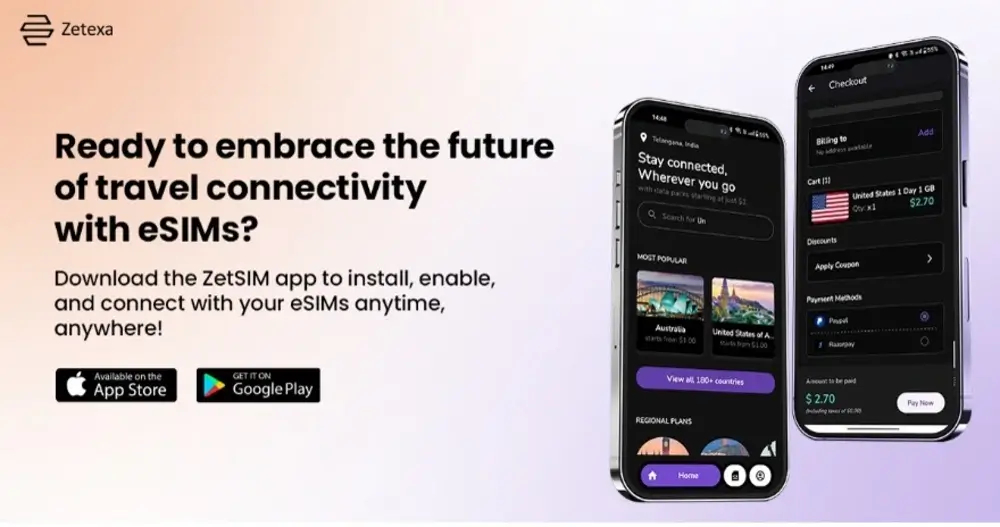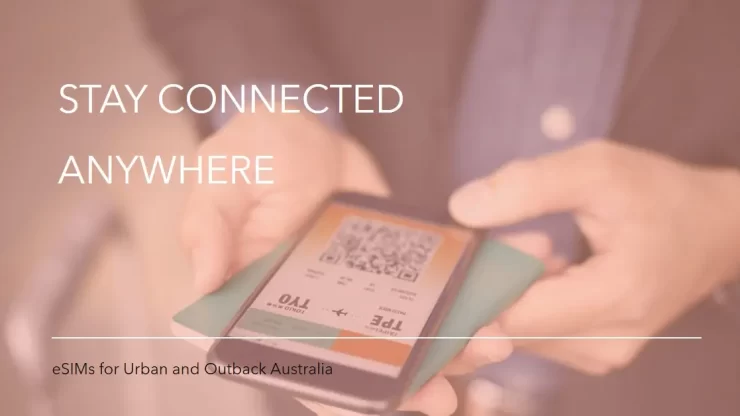In a country as large and diverse as Australia, where sprawling metropolitan areas with bustling cities rub shoulders with the complexities of the outside world, staying connected can often feel like being in a maze. Fortunately, thanks to new and ever-growing technologies, we are on the verge of a digital revolution that is bridging this geographical divide! Enter international eSIMs – a game changer in mobile connectivity that promises seamless communication whether you’re sipping a cappuccino in Melbourne or searching for hidden gems in Uluru.

But what exactly is an eSIM, and how is it changing our ability to communicate in some of Australia’s most remote areas? Join us as we explore this exciting world of cutting-edge technology that meets the Australian landscape. and make sure that no matter where you wander, you’re never far from your loved ones.
The State of Connectivity in Urban and Outback Regions
Australia’s urban areas are well-connected and equipped with high-speed internet and reliable mobile services. Cities like Sydney and Melbourne have extensive networks available that cater to tech-savvy people. Residents can stream, work remotely, and stay connected effortlessly.
The Outback, by contrast, offers a different model. The vast distance between cities often leaves outlying towns struggling with patchy coverage or no service at all. This gap hinders access to critical services and information.
Limited infrastructure makes it difficult for providers to provide consistent communication in these areas. Satellite service is available but comes with latency issues that frustrate users looking for a seamless online experience.
This disparity poses significant challenges to education, health care, and employment opportunities in rural areas. The digital divide remains a pressing issue as many Australians face unequal access to technology connecting them to the world.
Challenges Faced by Traditional SIM cards
Traditional SIM cards struggle with connectivity in Australian cities and remote areas. Calls can be dropped and data speeds slow down due to congestion in the city. As more devices connect, network infrastructure becomes more complex.
In remote areas, physical restrictions occur. Many places lack the necessary infrastructure to carry signals. This prevents any service from having patches or weak symptoms that frustrate users.
Additionally, for traditional SIMs, it is difficult to switch providers. Users have to physically exchange their cards, which can be impractical when traveling long distances.
Rural Australians face challenges in accessing mobile services almost entirely. Reliance on outdated technology limits their options and hampers communication efforts in emergencies or day-to-day operations.
These shortcomings underscore the need for solutions that offer more flexibility and reliability than those offered by traditional SIM cards. This is where eSIMs come to use.
Advantages of using eSIMs in Urban and Outback Areas
- International eSIMs transform connectivity by allowing users to switch between networks effortlessly. This flexibility is especially beneficial for urban dwellers who need seamless service when moving around.
- Besides, where traditional coverage can be spotty, eSIMs provide a lifeline. They enable remote travellers and workers to connect with local providers without the need for a physical SIM card. Just scan and they are good to go.
- Another advantage is data management. Users can easily track their activity across systems, optimize spending and ensure they stay connected.
- In addition, eSIM technology supports the widespread use of IoT devices in agriculture and mining. These services thrive on reliable connections, making e-SIMs an essential tool for efficient operations.
- Faster network access during emergencies or outages is also beneficial in urban areas because users can quickly switch carriers if necessary. It’s all about adapting to our fast-paced world.

Potential for Future Advancements with eSIM Technology in Australia
The future of eSIM technology in Australia is full of possibilities. As demand for seamless communication increases, improvements are likely to follow. Imagine a system where editing web pages is as easy as tapping your screen. These changes could change how Australians access mobile services, particularly in remote areas.
Other features could include enhanced data structures designed specifically for urban and outback users. With the right partnerships between tech firms and telecom providers like Zetexa eSIM, we can identify customized solutions that meet different needs. Moreover, the integration of IoT devices through eSIM for international travel can be further improved. The convergence of smart agriculture and connected cars will thrive with access to a reliable grid.
As transactions are streamlined across the country, eSIMs will play a key role in bridging the gap and ensuring everyone is connected regardless of location.
Addressing Concerns about Security and Privacy with eSIMs
Security and privacy concerns related to eSIMs are common among users. The idea of digital storage of personal data can be of discomfort to many.
However, eSIM technology uses advanced methods of encryption. This means your data is more secure than a traditional SIM card. Each eSIM is unique to the device, making access and cloning difficult.
Additionally, remote management adds an extra layer of security. Users can switch mobile providers without physically changing their SIM card, reducing exposure during transactions.
While these new features increase safety, it’s important to stay up-to-date on best practices. Regular software updates and strong passwords play an important role in protecting personal information.
The development of global eSIMs reflects improvements in connectivity but also urges users to be vigilant about their privacy.
Conclusion
The introduction of eSIM technology in Australia marks a significant shift in how communication is approached in different contexts, particularly in urban and rural areas. This new option not only provides convenience but also solves many of the consistent connectivity issues that traditional SIM card users face.
Looking at various studies, it is clear that international eSIMs are already experiencing impressive growth in remote areas. They empower individuals and businesses to have reliable internet access and reduce the frustration associated with managing multiple physical SIM cards. The impact on everyday life—from bringing families together to supporting telehealth services—cannot be overstated.
While there are concerns about security and privacy, advances in encryption technology continue to increase trust in this system. As more Australians adopt eSIM technology, there could be significant improvements that could further bridge the gap between urban and rural areas.
Ultimately, global eSIM adoption is about promoting inclusivity. As Australia moves ever further into a digital future, these tiny chips hold great promise for ensuring no one is left behind when it comes to connectivity—whether they live in busy cities or the quiet outback towns.

Download ZetSIM App from the APP Store
Download ZetSIM App from the Goole Play Store
Frequently Asked Questions
Are there any restrictions on eSIM usage?
eSIMs requires compatible devices and networks to function properly. In addition, in some countries, broad support for the technology is still lacking.
Are there any differences between urban and outback eSIMs?
No, because eSIMs work over existing cellular networks such as traditional SIM cards, a location within Australia will generally not have the charges.
How easy or difficult is it to set up and manage multiple profiles on my device?
Installing a new profile on your device can be relatively easy and can usually be done remotely through your carrier or service provider’s OTA update.
Have there been any problems with eSIM usage in rural Australia that have been reported?
Although there were initial concerns about connectivity issues in rural and remote areas, carriers have been working to expand their networks and improve connectivity and often eSIM carriers should users get the same connection as traditional SIM card holders.

